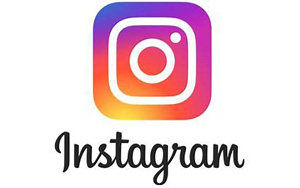 If it feels like Instagram influencers seem to be running social media, they pretty much are. With their massive numbers of followers and constant free products flooding their mailbox, they have new content to provide every day. As a retailer, you may be thinking about whether or not you should use, or even afford, an influencer to promote your products. The short and sweet answer is yes, absolutely you can and should, and here’s how:
If it feels like Instagram influencers seem to be running social media, they pretty much are. With their massive numbers of followers and constant free products flooding their mailbox, they have new content to provide every day. As a retailer, you may be thinking about whether or not you should use, or even afford, an influencer to promote your products. The short and sweet answer is yes, absolutely you can and should, and here’s how:
Baby Steps
First of all, there are a wide variety of social media influencers, also known as brand ambassadors, across Instagram, Facebook, Twitter, and other media sites with followers ranging from the thousands to the millions. The newer, and quite frankly, cheaper, influencers will have a few thousand followers and are the perfect start to get your brand name out there.
Casely, a cell phone accessories retailer, started their brand ambassador strategy by reaching out to “micro” influencers who had only a few thousand followers. The company would send these influencers free products to try out, and they would in turn post some product photos to their followers or talk about it to their friends and family. It took just two years for this startup company to go from $150k a year in sales to $10m a year with this strategy.
But how do you find these influencers and keep your budget organized? “We started out with no system and were just using Google Sheets, and it was a nightmare to manage,” says Mark Stallings, co-founder of Casely. “But by using the Brand Ambassador App, we found and contacted brand ambassadors and it really helped our engagement rates on Instagram.” Casey continues, explaining, “We can tell [the influencers] about new products that are coming out, get them into their hands and they can promote them to their following and friends and family.”
Is Instagram Right For Your Business?
Now that you know this is an achievable goal without breaking the bank, it’s time to figure out the best social media platform to promote your brand. This solely depends on the types of products that you sell. In Casely’s case, since their phone cases are affordable, easy-to-use, and attractive, Instagram was their go-to brand ambassador platform.
“Basically, because Instagram is such an impulse purchase type of platform, viewers can see our products and how beautiful and inexpensive they are, so it’s an impulse buy,” Emily Stallings, co-founder of Casely, said. “I think that the Instagram market is so saturated with ads that our product is something people can actually use at a low cost, so they feel they can buy it.”
Social Media Popularity by the Numbers
Find Your Influence, the leading influencer marketing platform, surveyed their social media influencers and found that Instagram is still number one for brand ambassador marketing, with 65 percent posting sponsored content on the platform most often.
Instagram may not be the end-all, though, with 38 percent of influencers seeing TikTok competing for sponsored content opportunities. TikTok (www.tiktok.com/en) is a social media platform where users post short videos, and more influencers have been flocking to the site to post short videos on new products they are trying out. Even Casely is starting to break the ice on the TikTok platform with brand ambassadors, so it’s definitely another platform to keep in mind.
Your overall strategy needs to go beyond the popularity of a social media site. Depending on the products you’re trying to promote, retailers need to think about the demographics for each social site and determine the best fit. HubSpot (blog.hubspot.com)breaks it down beautifully: the most popular age range of Facebook users is 18-29; the most popular age range of Instagrammers is 13-17; 27 percent of Twitter users are between 30-49, and the most popular age group of TikTok users are teens.
Goals for 2020
No matter which social media platform you decide to use to promote your products, brand ambassadors are a great way to get started and grow your business. Now, Casely pays influencers anywhere from a couple hundred dollars to a thousand dollars for one post or story to Instagram, and while this may seem like a scary number, the company has seen the opportunity and growth influencers have brought to them, so they are more willing to invest.
“There are three main things to think about before marketing: you need to have a quality product, high quality customer support, and the ability to get the product to customers in a timely manner,” Mark says. “Once you have those down, get the product into people’s hands and get the word out. Businesses just starting out may not have as much money, so instead of investing heavily into one large influencer, getting the word out through smaller influencers can really help because there’s no cost for posting.”
